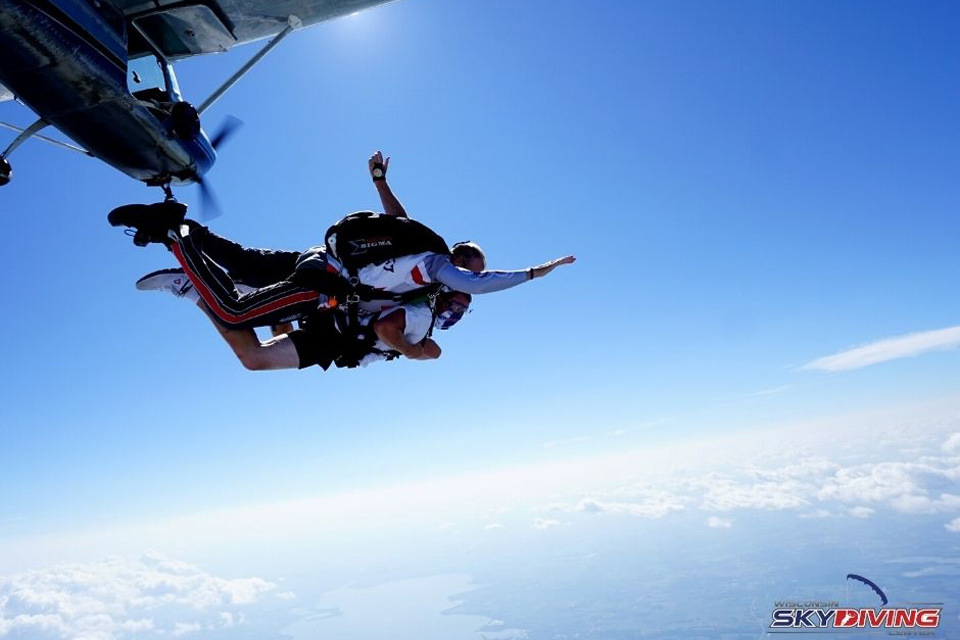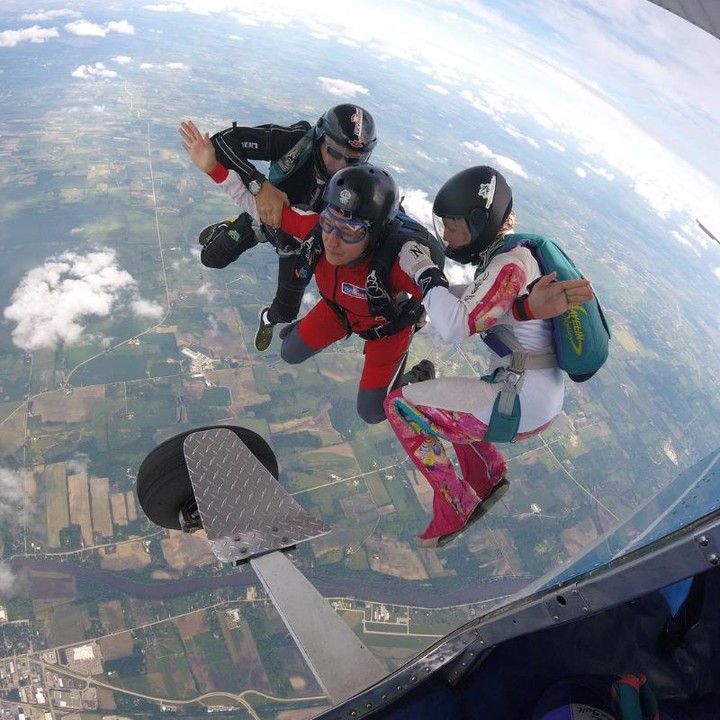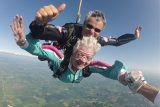Military Skydiving and Skydiving Military Dogs
General
Posted by: Wisconsin Skydiving Center 7 months ago
The origins of our beloved sport are deeply rooted in military history – military skydiving has paved the way for techniques used today in civilian jumping! In this article, we’ll explore the fascinating history of military skydivers and highlight some key differences between jumps done for special ops and just for fun. First up: how military dogs skydive!
Military Dog Skydiving: How Does it Work?
How important are military dogs? They’re basically the unsung heroes of the skies! Military dogs are actually considered to be non-commissioned officers in the military and are placed one rank above their handler. This tradition was set in place to ensure respect between the two, and creates a powerful and intimate working relationship. There are a lot of questions about the vital skydiving dog military – let’s jump into a few.
What is the role of a dog in the military?
Skydiving military dogs – sometimes called para-dogs – and those who serve primarily on the ground have been invaluable partners in combat for as long as we can remember. From detection of explosives to tracking down the enemy, these highly-skilled canines play a crucial role in safeguarding their human counterparts.
Do military dogs skydive by themselves?
Not all, but just like humans, some doggos do send it solo! Check out the next question for more!
Do Navy SEALs parachute with dogs?
Yes! And, when a Navy SEAL needs to land solo in the water, their canine comrades can, too. That’s right, dogs can jump solo if they’re landing in water. If a canine is landing earthside, their handler will actually secure them to their front and conduct a tandem skydive with them. If a four-legged friend can do it, you can do it!

The History of Military Skydiving: Influence
The first documented military parachute jump was from a balloon by Mr. Albert Berry in 1912, with the U.S. Army making their debut to the skies a few years later in 1918. The U.S. military perfected their airborne craft and showed how effective these surprise attacks from the sky could be, most memorably on D-Day in 1944 when U.S. troops stormed the beaches of Normandy.
As military technology advanced, so did parachuting techniques, and today, military skydiving is critical to missions. How has this influenced civilian jumping? Well, without the need for skydiving in the military, it may have taken people much longer to start implementing the idea for fun!
The United States Parachute Association (USPA) breaks down the history of the progression of skydiving – from static line jumps (which is still used in the military) to Accelerated Freefall, which is at the foundation of the comprehensive student training method we use here at Wisconsin Skydiving Center.

What Are the Major Differences?
Military parachute jumps and civilian skydives may seem similar at a glance – they’re both just skydiving, right? Wrong! With a closer look, we’ll see the two diverge quite a bit.
Intention.
The primary purpose of military jumps is tactical. They’re done to gain a strategic advantage by entering hostile environments, whether to bring aid or assist in a mission. Every jump is planned with a specific objective in mind.
Civilian skydiving, on the other hand, focuses primarily on fun. And while this type of modern-day jumping may still have an objective (like honing in on a new discipline), the pressure to succeed is not on the same playing field.
Type of Parachute.
The majority of military parachutes are a more sophisticated version of the old school “rounds,” and are designed for efficiency and reliability. That’s not at all to say that civilian skydiving canopies are not reliable. Think of it this way, military parachutes are made to open fast – who cares if you have a snippy or uncomfortable opening!? Civilian parachutes, in contrast, are made to open in a controlled and predictable manner, giving the jumper(s) more time to slow their descent from exhilarating freefall to peaceful canopy flight.
Round canopies are at the mercy of the wind direction, which is one reason they’re dropped from a much lower altitude – typically 1,000 feet AGL or lower. This is low enough to be considered an emergency exit for civilian jumpers, who typically don’t exit below 3,000 feet AGL.
Sport skydivers fly parachutes that are designed to have lift and keep them in the air for as long as possible so they can leisurely fly around, while military canopies are designed to get down to the ground, ASAP.
The Army Golden Knights are an internationally-respected and highly-decorated military parachute team that flies square canopies (just like we do for fun) and specializes in multiple disciplines.
Required Training.
Military airborne training and civilian skydiving training are very different because of the purpose of the jump and the type of equipment used. Service members are trained to get out of the aircraft with heavy gear in high-stakes situations, land safely, and immediately proceed with their mission.
Civilian jumpers may not have to carry extra gear, but they do have to be more intentional about piloting a parachute. Military skydivers typically have less emphasis on skydiving-specific training but undergo extensive military training, while civilian skydivers receive more comprehensive training focused on the techniques and safety protocols of skydiving itself.
We are so thankful to our military members and their service to our great country. We look forward to showing you the FREEDOM found in soaring the skies – book today!
Categories:
You May Be Interested In:

Can You Skydive Into Water?
3 weeks ago by Wisconsin Skydiving Center

Staff Spotlight: Dario Meloni
1 month ago by Wisconsin Skydiving Center

Can You Skydive With Dentures?
2 months ago by Wisconsin Skydiving Center

Does Skydiving Change Your Life? 5 Powerful Ways It Can.
2 months ago by Wisconsin Skydiving Center